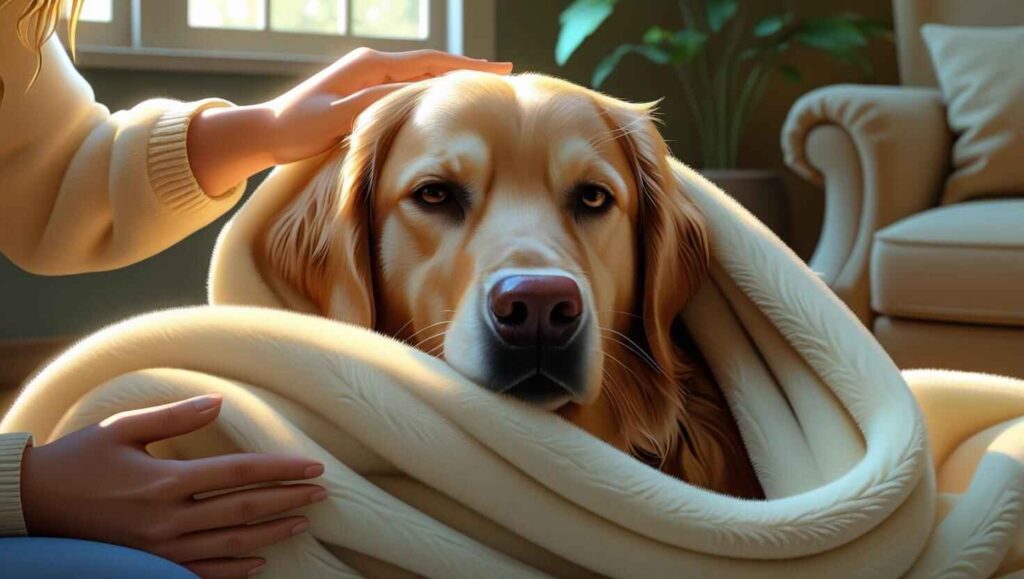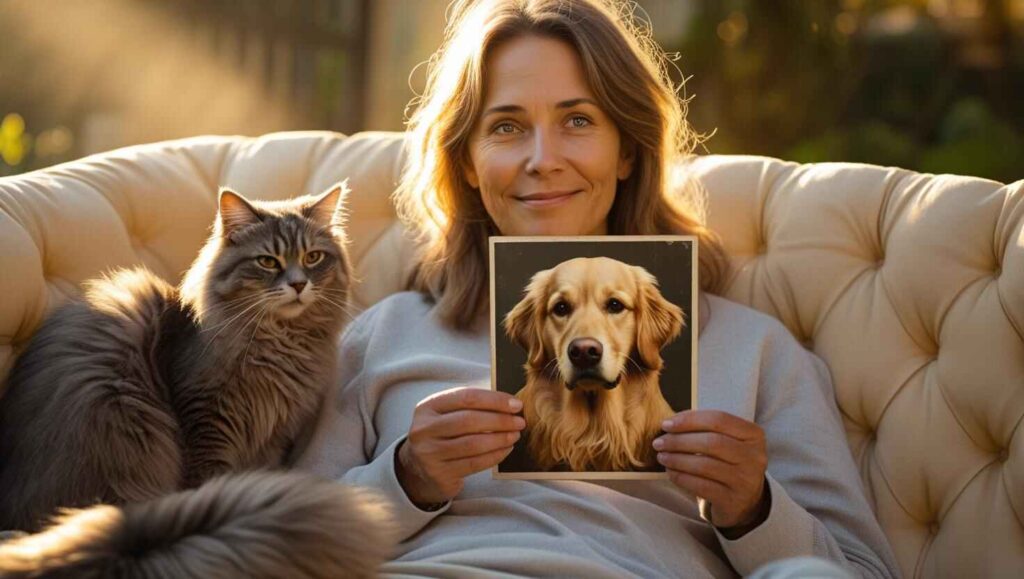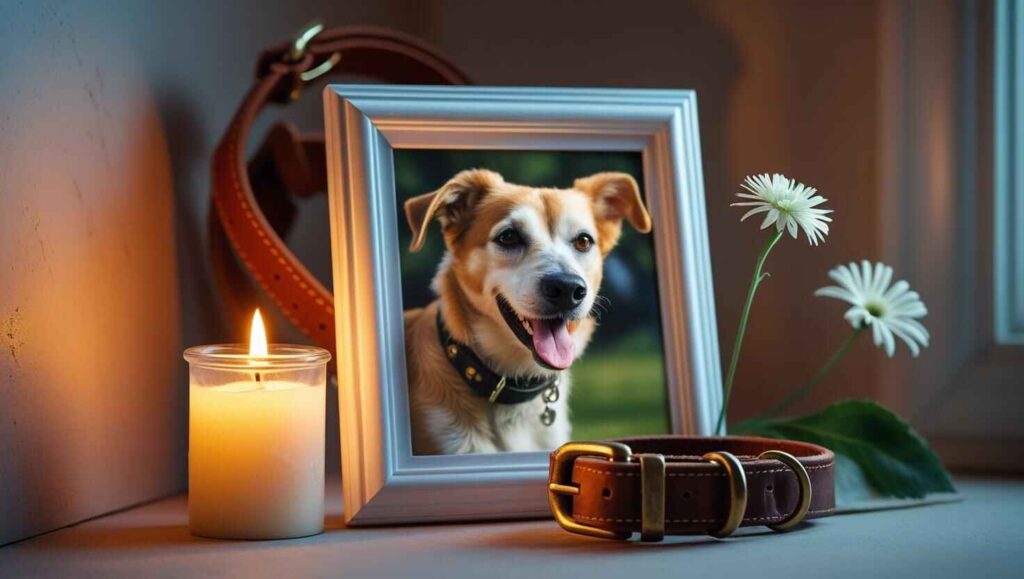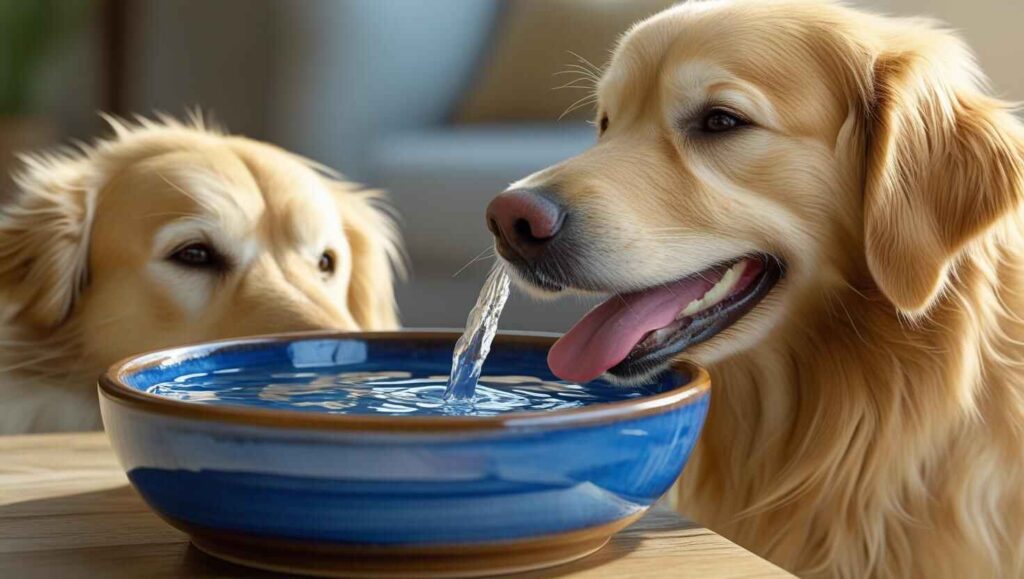Understanding the Grief of Losing a Dog
Losing a dog isn’t “just losing a pet.” It’s losing a family member. Dogs provide companionship, emotional support, and unconditional love. When they’re gone, a deep emotional void follows. Grief can show up as sadness, guilt, anger, confusion, or even physical symptoms like fatigue or loss of appetite.
Grief is a deeply personal experience, and everyone processes it in their own way. There’s no “correct” way to mourn the loss of a beloved pet. What matters most is recognizing that your emotions are real and completely valid—that’s where healing begins.
Immediate Steps to Take After Your Dog Passes
Confirm the Death
In moments of distress, it’s sometimes difficult to be sure if your dog has passed or is simply unconscious. Look for signs like no heartbeat, absence of breath, unresponsive eyes, or stiffness (rigor mortis). If you’re unsure, contact a vet immediately.
Call Your Veterinarian
Your vet can guide you through the next steps, including confirming death, explaining body care options, and referring professional services. Some may offer pet pickup and aftercare arrangements.
Handle the Body Respectfully
If your vet isn’t immediately available, keep your pet’s body cool and covered. Place them on a blanket or towel in a quiet, cool room. Wrap the body in a blanket and use a plastic sheet underneath if transportation is needed.

What Are Your Options for Aftercare?
After your dog dies, you’ll need to decide how to handle their remains. Your options depend on local regulations and personal preferences.
Home Burial
Pros: Personal, intimate, low-cost
Cons: Not always legal, requires proper location and depth
Check with your local authorities for regulations before burying a pet on your property. Always dig at least 3–4 feet deep to prevent disturbances.
Pet Cremation
Pros: Most popular, flexible, allows you to keep or scatter ashes
Cons: May be expensive depending on provider and type (individual vs. communal)
You can arrange cremation through your veterinarian or a nearby pet cremation service. If you choose individual cremation, you’ll have the option to keep your dog’s ashes as a personal keepsake.
Pet Cemetery Services
Pros: Professional care, permanent grave marker, peace of mind
Cons: Can be costly, not available everywhere
These services often include headstones, burial plots, and ceremonies.
Informing Family and Children
Talking to Kids About Pet Loss
Be honest, age-appropriate, and empathetic. Use simple terms, avoid euphemisms like “sleeping,” and let them ask questions. Give them time and space to grieve.
Tip: Let kids create drawings, write letters, or build a small memorial to help process their feelings.
Helping Other Pets Cope
Animals grieve, too. Signs include loss of appetite, lethargy, or increased vocalization. Comfort them with routine, attention, and affection. Some may benefit from temporary changes like sleeping in your room.
Emotional Healing After the Loss

The Grieving Process
Grief isn’t linear. You might find yourself experiencing a mix of emotions like denial, anger, bargaining, sadness, and eventually acceptance—but they won’t always come in a neat, predictable order.Grief looks different for everyone, and that’s perfectly normal. There’s no one way to feel or heal. Be patient with yourself and allow time to heal.
Seeking Support from Others
Don’t isolate yourself. Talk to friends, join pet loss support groups, or consider therapy. Pet loss hotlines and grief counselors can also help.
External Resource: Pet Loss Support from ASPCA
Memorializing Your Dog
Keepsake Ideas
- Custom urns or paw print casts
- Memory boxes with toys and collars
- Engraved jewelry with your pet’s name or ashes
Pet Memorial Ceremonies
Holding a simple ceremony or lighting a candle in your dog’s memory can be a comforting way to say goodbye and find a sense of peace. Invite friends or family to share memories. Consider planting a tree or flower in your pet’s honor.

Legal and Administrative Considerations
Update Microchip and Pet Registry
If your dog had a microchip, contact the registry to mark them as deceased. This avoids any confusion in the future.
Notify Insurance or Service Providers
Cancel any pet insurance, food deliveries, or medical appointments. If your dog was a service animal, notify the appropriate agency.
Preparing Emotionally for Future Pets
Don’t rush into getting another pet unless you’re emotionally ready. Some find comfort in adopting soon; others need time to heal. Reflect on your readiness, not just the absence of your dog.
Pros and Cons of Getting Another Dog
| Pros | Cons |
|---|---|
| Brings joy and companionship | May feel like you’re replacing your pet |
| Helps with loneliness | Can bring back emotional pain |
| Can honor your dog’s memory by rescuing another | May not be ready emotionally |
Frequently Asked Questions (FAQs)
1. How long should I wait before getting another dog?
There’s no set time. Wait until you’re emotionally ready and no longer comparing a new dog to the one you lost.
2. Is it normal to feel guilty after my dog dies?
Yes. Many owners second-guess decisions. Know that you did your best with the information you had at the time.
3. How do I know if my other pets are grieving?
Look for changes in behavior—like hiding, whining, or not eating. Offer comfort and maintain routine.
4. Can I keep my dog’s ashes at home?
Absolutely. Many owners keep ashes in urns, plant them with a tree, or use them in keepsake jewelry.
5. What should I say to someone who lost their dog?
Offer empathy and support. Avoid clichés like “They’re in a better place.” Just say, “I’m so sorry for your loss. I’m here if you need anything.”
6. How can I involve kids in the grieving process?
Encourage them to share stories, draw pictures, or create a scrapbook of memories. Be honest and supportive.
Final Thoughts
Losing a dog is heartbreaking, but honoring their memory and allowing yourself to grieve will help the healing begin. Your dog loved you without question—now it’s your turn to show yourself that same kind of kindness and care as you heal.
Whether it’s creating a memorial, talking to loved ones, or seeking professional support, the steps you take now can bring peace in the future. Remember, grief is love in another form—and it means your dog was deeply cherished.
#.you may also like:



